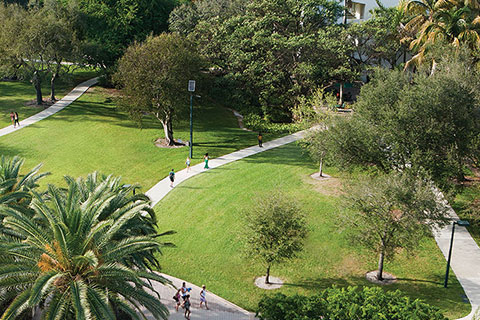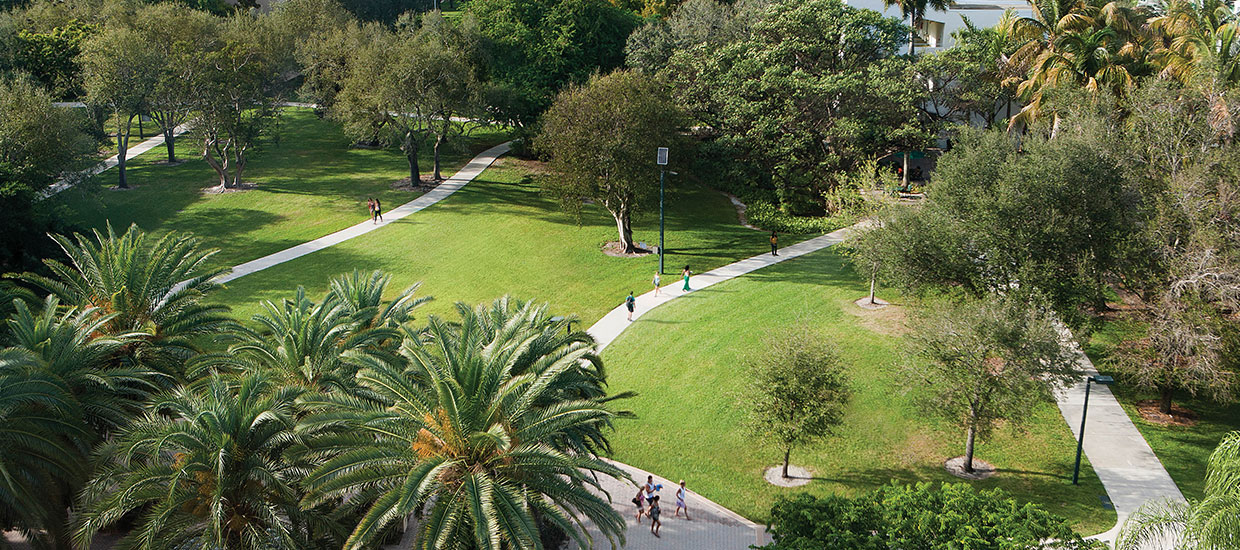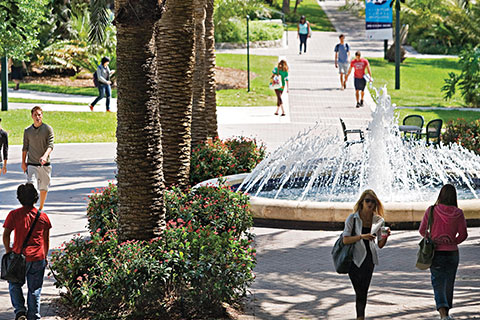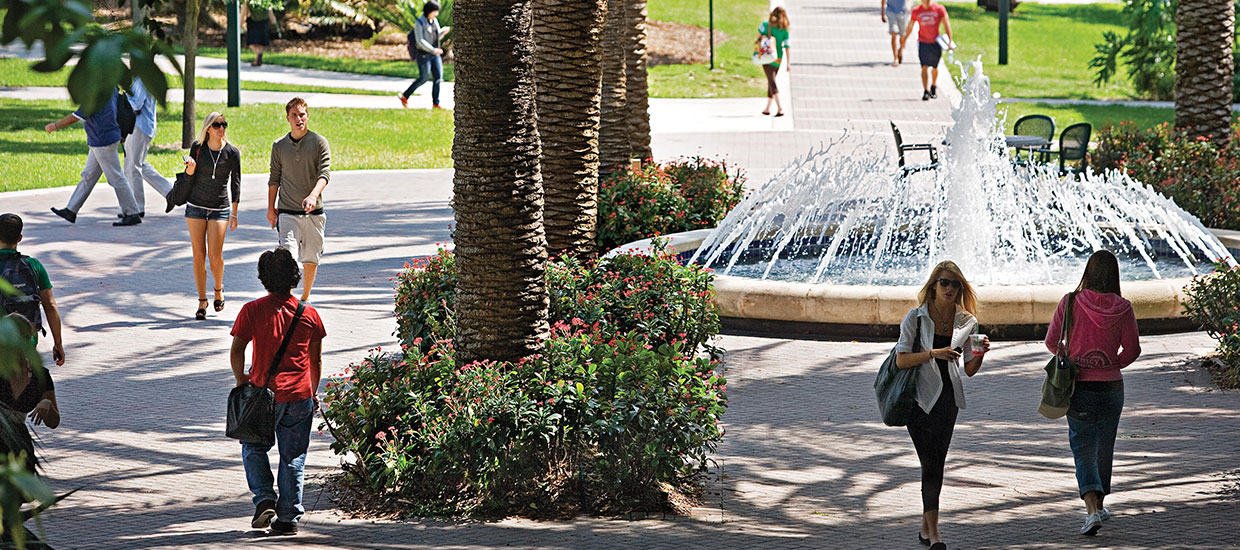Working closely with Margaret Hatcher, Robert Parsley, and Geomantic Designs, as well as with the UM architecture and design faculty and buildings and grounds team, Bosey put herself into almost every leaf, blade, frond, and flower that now flourishes on campus. She was an ardent supporter of the University’s John C. Gifford Arboretum, a collection of rare plants and trees maintained for educational and research purposes and to inspire an appreciation for tropical vegetation. She opened a series of palmetums featuring palms and cycads from several countries. Her efforts continue to make buildings brighter, vistas more colorful and textured, and breezeways, walkways, and seating areas more inviting.
UM President Julio Frenk is pleased to present the Roberta “Bosey” Fulbright Foote Prize in her honor to a member of the UM community—faculty, staff, student, or trustee—who has made a meaningful and lasting contribution to the beauty, humanity, and future of the campus.
How to nominate
Past recipients
2023 Recipients
Pavan Gudoor
Pavan Gudoor, who serves as the Environment and Conservation Organization (ECO) co-chair, has spent the past four years enthusiastically educating his peers on how to be more environmentally conscious by implementing sustainable initiatives that improve the University environment, reduce waste, and move others to action to protect our natural resources.
In his previous role as an ECO Representative within his residential college, Pavan successfully implemented the Food Alert Program, which ensures that food left over after campus events does not go to waste. Pavan, a senior studying computer science and on the pre-med track, also created an inter-residential competition called the Campus Race to Zero Waste Program, a waste reduction and recycling contest to motivate his peers to reduce waste. Pavan’s passion for the environment on our beautiful University campus shines in all he does.
Son Vo
Son Vo, senior manager of facilities and operations, oversees the Coral Gables Campus grounds landscaping team and has helped support myriad sustainability initiatives, including the campus' environmental stewardship. Son has worked with landscape architects, arborists, horticulturists, and our own Department of Biology to implement a maintenance plan for the Gifford Arboretum and Palmettum, and taken steps to ensure the campus waterways are monitored and routinely cleaned, recognizing them as a source of beauty and ecological diversity.
His leadership and passion for building biodiversity led to the planting of the Connect to Protect Network, a native ecosystem garden at the Campo Sano Building sponsored by the Student Government’s ECO Agency in partnership with Fairchild Tropical Botanical Garden. Son also worked on behalf of the University of Miami to work with Fairchild as a member of the Million Dollar Orchid Project – adding more than 500 orchids across campus to existing trees. His commitment to sustainability is highlighted in the partnership he helped foment with Dr. Terri Hood to protect the Atala butterfly, an imperiled species that saw a resurgence in Lakeside Village. Vo has his hand in bettering all the sites on campus for all to enjoy.
Read the News@TheU story.
Inaugural Recipient
Stephen D. Pearson, director of the John C. Gifford Arboretum, is the inaugural recipient of the Roberta “Bosey” Fulbright Foote Prize. Over the years, Pearson helped start the Tropical Flowering Tree Society and served as president of the Friends of Chapman Field. For the last 24 years, he has been a member of the board of directors of the Montgomery Botanical Center. As Chairman of the City of Miami’s Beautification Committee, he led volunteers in planting flowering and native trees along I-95 and other highways in the early 1990’s. He has been honored with the Outstanding Volunteer Award from the Florida Urban Forestry Council and the National Outstanding Volunteer Award from American Forests and the National Urban Forestry Council.
Through his enthusiasm for preserving the history of our community’s natural environment, Pearson has created a peaceful oasis for meditation and relaxation on our campus. With a diverse and unusual collection of over 450 trees that spans every continent except Antarctica, the Gifford Arboretum is also a valuable tool for education and research.
“Real estate and business law was my profession, but horticulture and plants were my vocation,” says Pearson, who worked as a lawyer for most of his career.







